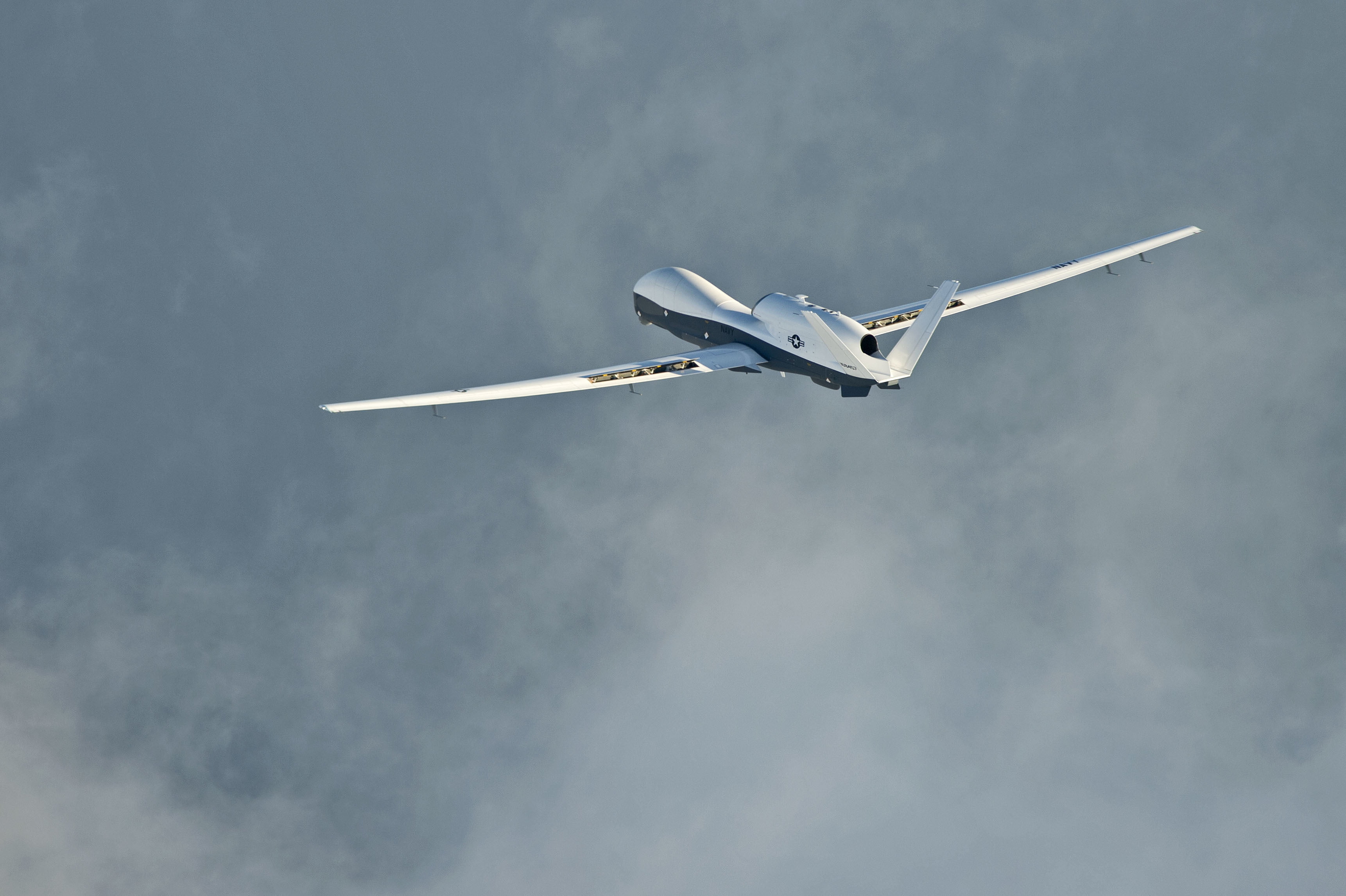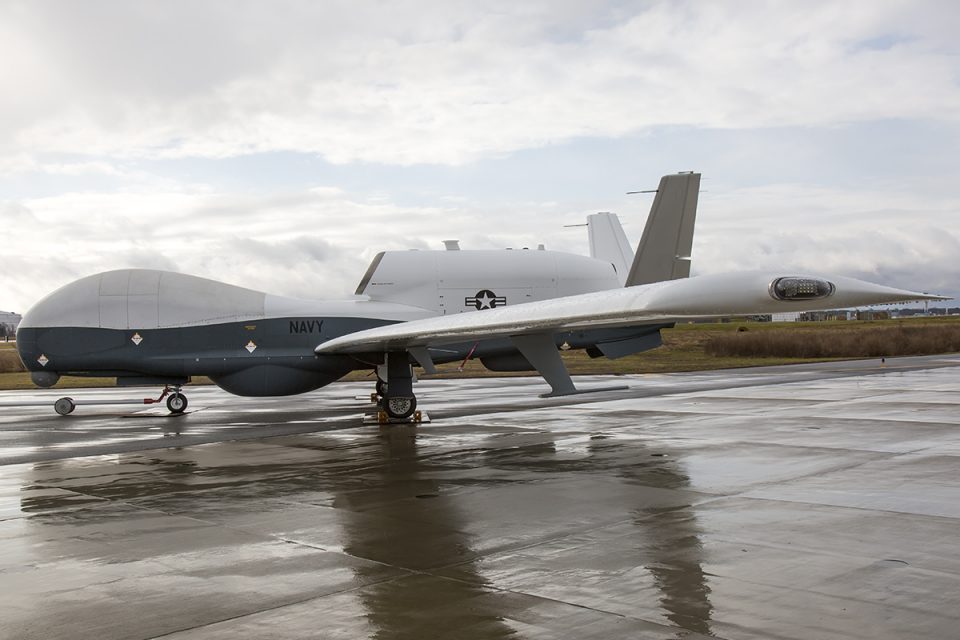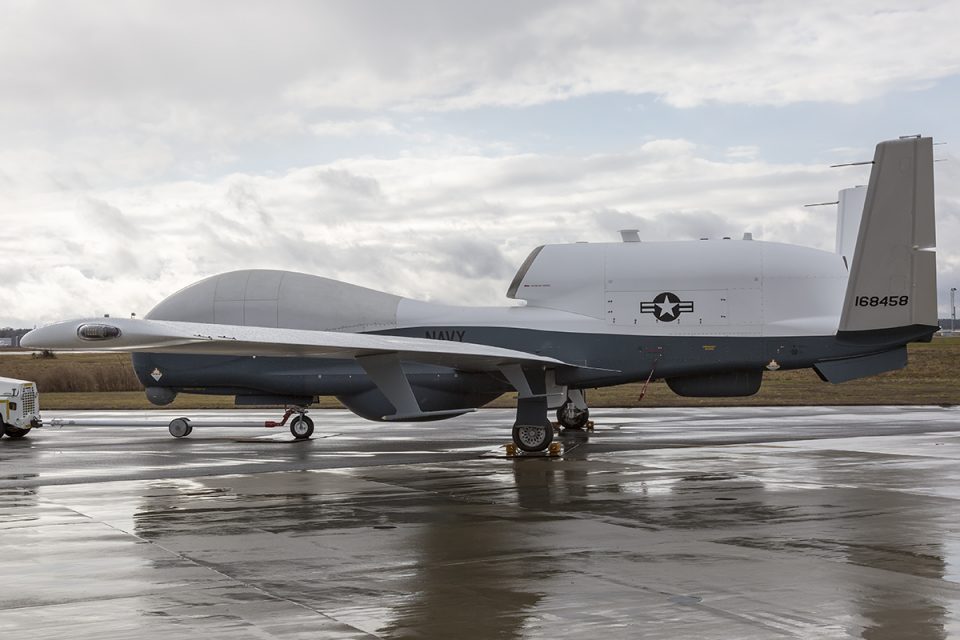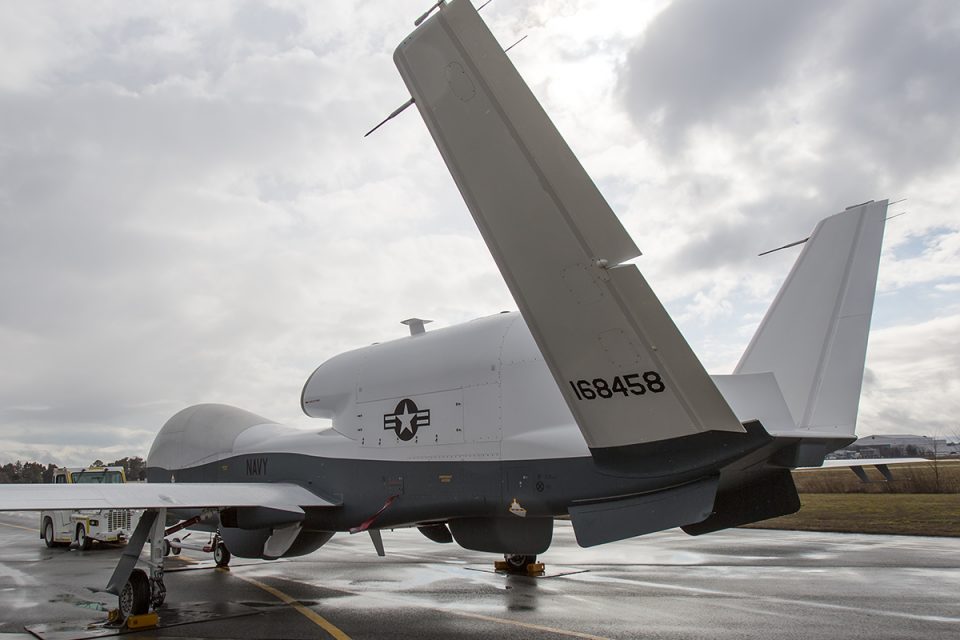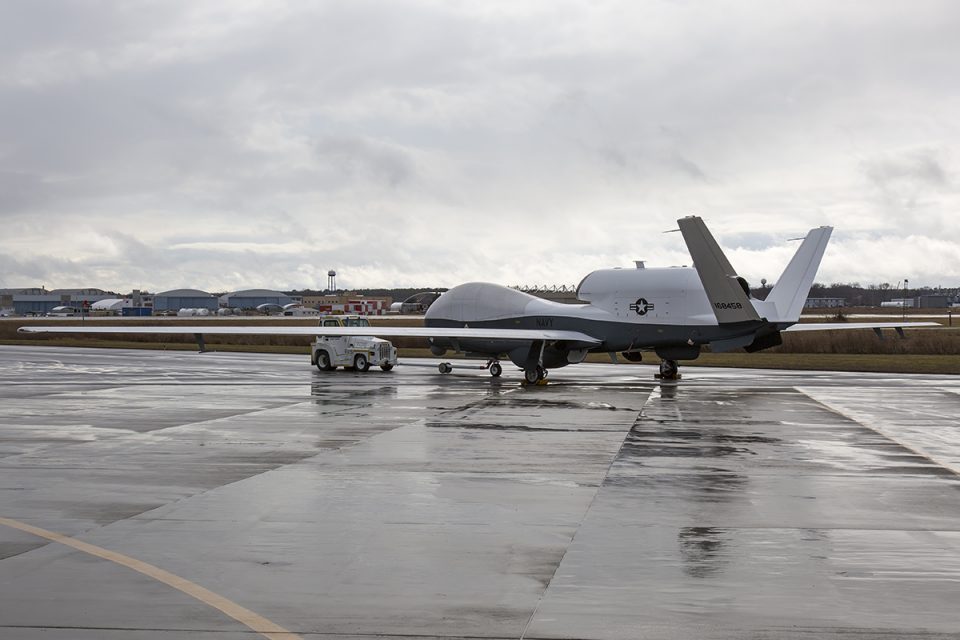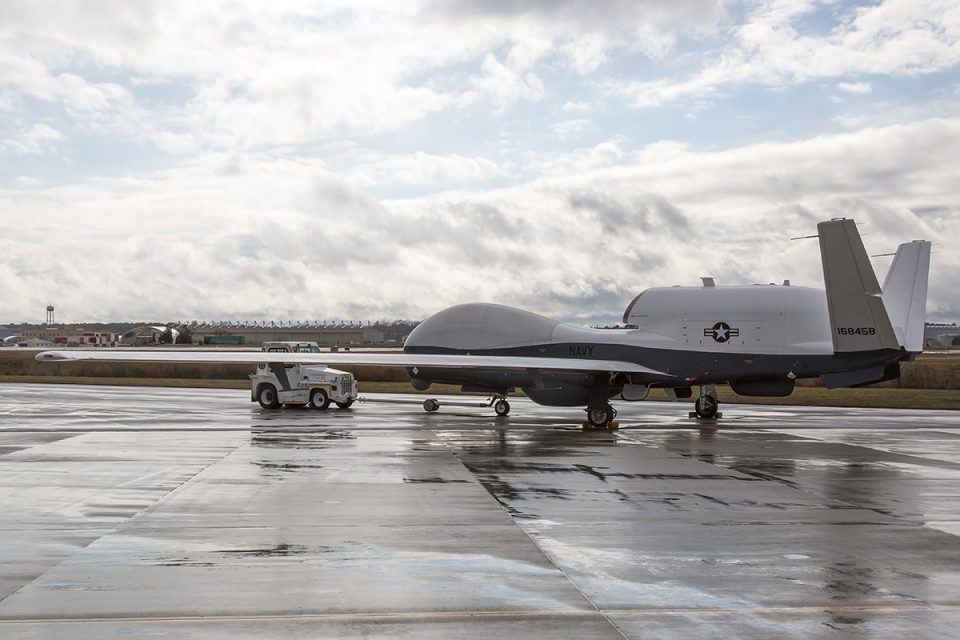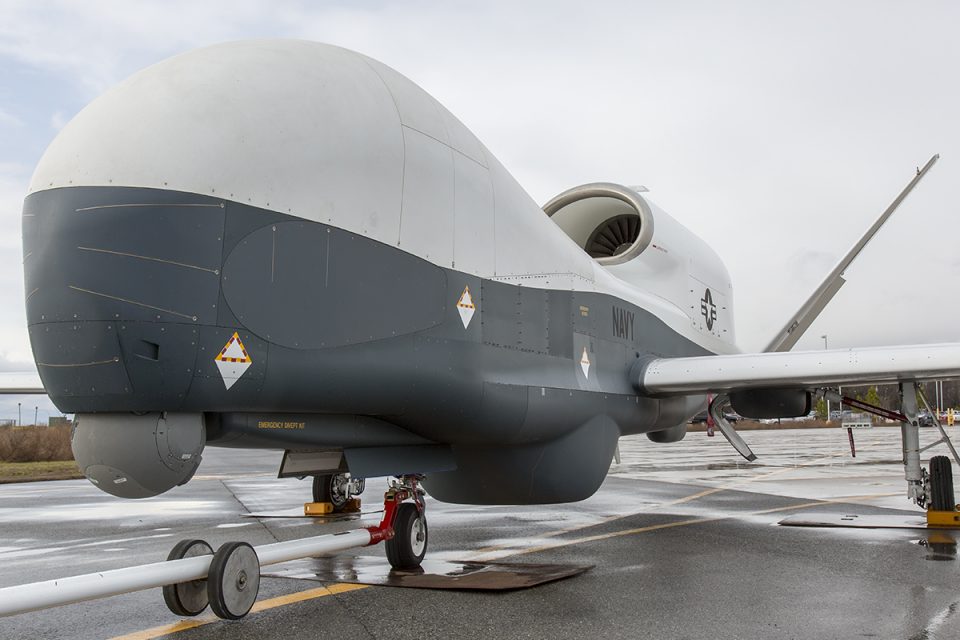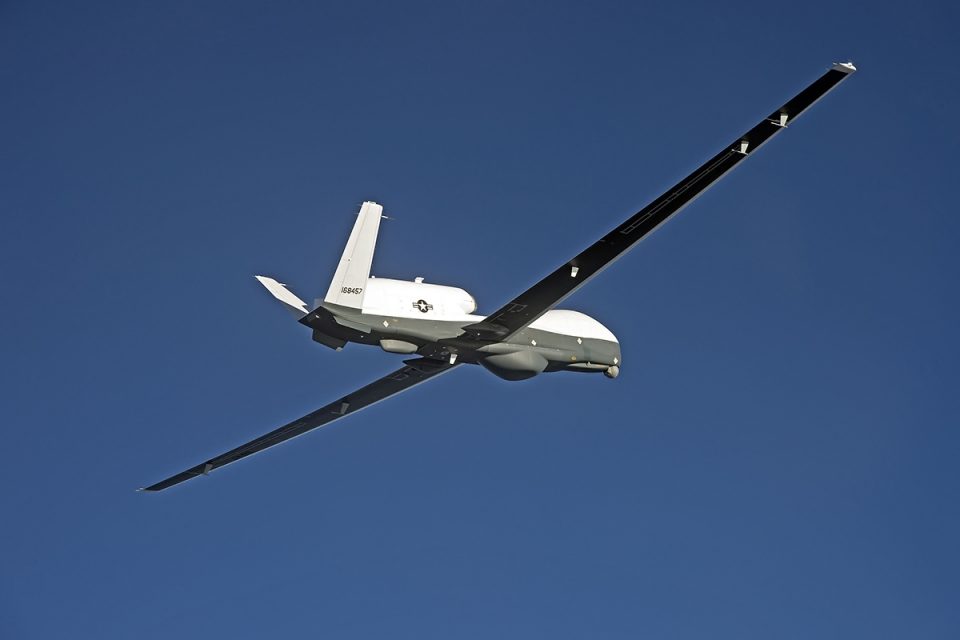2016-05-31 By Ed Timperlake and Robbin Laird
The USN is approaching the P-8/Triton combat partnership as a way to address the integration of manned, and unmanned systems, or what are now commonly called “remotes”.
The Navy looked at the USAF experience and intentionally decided to not build a Triton “remote” operational combat team that would be stovepiped away from their P-8 Squadrons.
The team at Navy Jax is building a common Maritime Domain Awareness and Maritime Combat Culture and treats the platforms as partner applications of the evolving combat theory.
The partnership is both technology synergistic and also aircrew moving between the Triton and P-8.
The P-8 pilot and mission crews, after deploying with the fleet globally can volunteer to do shore duty-flying Tritons. The number of personnel to fly initially the Tritons is more than 500 navy personnel so this is hardly an unmanned aircraft.
Hence, inside a technological family of systems there is also an interchangeable family of combat crews.
With the P-8 crews operating at different altitudes from the Triton, around 50K, and having operational experience with each platform, they will be able to gain mastery of both a wide scale ocean ISR and focused ASW in direct partnership with the surface navy from Carrier Strike Groups, ARG/MEUs to independent operations for both undersea and sea surface rather than simply mastering a single platform.
This is a visionary foundation for the evolution of the software upgradeable platforms they are flying as well as responding to technological advances to work the proper balance by manned crews and remotes.
Triton Arrival in Pax River 2014 from SldInfo.com on Vimeo.
We were able to discuss this approach with Commander Opp, who led the P-8 transition and is now doing so for Triton and Rich Helmerle, a retired Navy Captain, who now works for SAIC and has worked with the “family of systems” acquisition from the beginning and is now tasked in leading the effort to shape the 2025 concepts of operations for the dual deployed capability which P-8 and Triton represent.
CDR Joseph Opp is the VP-30 Triton FRS who had a similar assignment with P-8 prior to coming to Triton. Given his engagement in the P-8 transition naturally he is focused on the integration of the overall “manned and unmanned” ISR/C2 effort.
The perspective conveyed by Opp and Helmerle was that a foundation of common domain knowledge was being shaped for Maritime Domain Awareness and that body of knowledge was being shaped and applied to the two platforms, rather than thinking in terms of two new platforms which needed to be integrated in some future combat space.
Indeed, the combined capability of providing continuous coverage from a “manned” and “unmanned” asset provides a significant capability able to work with the satellite network or to shape alternatives.
For the ground up, crews are training to work in satellite degraded environments as well as one which is satellite enabled. And with the Poseidon in the air, decision makers are deployed as well.
Decisions can be pushed to the leadership on the plane notably in a rapid action or degraded communications environment. It is not just about ISR or Maritime Domain Awareness; it is about putting information to the right persons at the right time.
According to the Triton team, the USN looked at the USAF experience with Predator and did not want to repeat it with Triton.
“We recognized that it would be better to have a broader range of experience to our Triton operators than simply operated a remote.
By being part of the combined Poseidon-Triton enterprise, they could operate seamlessly with the capabilities of each asset.”
Another key advantage is shaping domain knowledge of the key geographical areas where the dyad will operate.
“The Poseidon operates from 15-30,000 feet normally; the Triton will operate at 50,000 feet and take a broader view.”
The world looks differently at each altitude but by rotating crews, a unique perspective is gained by operating at the different altitudes and with different operational approaches to gain knowledge dominance.”
This is an approach for a new generation which “wants choice in their careers, rather than being locked in to a single platform.”
This is about crew resource management as well. It is abut shaping, developing and deploying the right skill to the task.
But the capabilities of the dyad are so good in terms of richness and fidelity of information there is already a tug of war between the intelligence community and the operators.
In an era of distributed lethality or distributed operations in the extended battlespace, the decision makers in the fleet, need the information to inform time-constrained decisions.
The fleet commanders need to make timely decisions; the intelligence community wishes to collect information, first, and inform decision makers later. This structural division will simply not work in the era of distributed decision-making and distributed lethality.
The information-decision cycle has to change to adapt to the technology.
“We need an effective cross-domain solution.
The huge divide between intelligence and operations has to be closed.”
Their experience is suggestive that there is a broader need for a very robust discussion on real time actionable intelligence information.
US National Command Authority enforcement of Rules of Engagement (ROE) has had a “good and other” progression over time. The “good” is thoughtful ROEs can save lives from fratricide and friendly fire while still allowing direct and indirect fires to destroy the enemy.
The “other” is what we have quipped is the new OODA loop, an OO-L-DA loop in which L stands lag time in combat tempo for Legal review. But after Navy Jax we came away with concern for what yet again is a roles and mission discussion on the flow of strategic and tactical “Intelligence ROE”
If not addressed and debated early, a template of actionable intelligence information going directly into IC NRO/NSA/NGO and upper echelon commands to be analyzed and disseminated may inhibit combat effectiveness and the decisiveness need to prevail in the contested and extended battlespace.
Time sensitive intel is critical at lower level direct action combat commanders from the Squadron pilots, CAG and Strike Group Commanders. The ROE in the traditional IC formula of “up and out” may not be in harmony with ever evolving speed of light sensor shooter technological advances.
A very specific example highlights this challenge.
Captain Bill Buckey, a Marine F/A-18 fighter pilot flying combat in the Desert Storm Air Campaign described the issue of IC ROE. He was with VMFA-451 flying strike missions out of Shaikh Isa Airbase in Bahrain. Through the bad luck of timing, the Marines just prior to Desert Shield/Desert Storm had decommissioned VMFP-3, their RF-4 Photo Recce Squadron.
However, the Reno Air Guard F-4 photo recce squadron was stationed on the same base. The ANG mission flying with the great combat quote “unarmed and unafraid,” captured mission pictures that had both tactical and strategic significance. They were not given directly to the Marines but went up the chain-of-command to Riyadh–never to return. Fortunately in great ANG tradition the Squadron CO said “screw this” and handed their ever current pictures directly to the Marine Fighter Squadrons of Marine Aircraft Group-11. This combat reality, thankfully at the same base, was tactically significant in both aircrew survivability and Battle Damage Awareness.
But this is not how you want things to work.
We need a shift in how intelligence goes directly to the warfighter and they make decisions in a timely manner.
The CNO has recently decided to accelerate the Triton capabilities from the baseline radar enabled Triton to the multi-SIGINT version. So IC/Combat operators ROE needs attention.
“The first two Tritons will be the baseline birds (with radar for surface coverage) and the rest will roll out as SIGINT enabled birds the sorting out of appropriate Intel sharing is now evident.
Additionally, the Triton like the Poseidon is software enabled which means that it will undergo ongoing block upgrades which will evolve its capability to the evolving threats as well.
With Northrop Grumman as the key designer and software enabler of the Triton, Northrop’s key role in the F-35 combat systems will be synergistic with the P-8/Triton dyad as well.
“The radar on the Triton is the grandson of the F-35 radar and benefits from the common radar enterprise.”
As a software enabled bird, and one operated from shore, “anything software touched enters the training system rapidly. We have to update the instructors but for the students they are just using the software and not focused on which block they are using.”
It is clearly a different age; with the technology designed for the younger generation to enable the fleet to fight in the 21st century extended battlespace.
Editor’s Note: Our colleague Todd Miller earlier this year visited the Triton Program at Pax River earlier this year and got an update on the program.
https://sldinfo.com/us-navy-mq-4c-triton-makes-persistent-progress-towards-deployment/
Born out of the Broad Area Maritime Surveillance (BAMS) program, the MQ-4C Triton is a derivative of the RQ-4 Global Hawk featuring significant modifications to the airframe, systems and sensors. It is an extremely capable platform, so capable that many debates have arisen about the possibilities of the Global Hawk replacing the venerable U-2 altogether.
Given the MQ-4C is more capable than the Global Hawk in a number of areas – flight parameters, sensors, and communication, it surely provides exceptional capability.
The US Navy’s duo of P-8A Poseidon & MQ-4C Triton are replacing the P-3C Orion’s and are integral to the Navy’s Maritime Patrol and Reconnaissance Force (MPRF) and broader Intelligence, Surveillance and Reconnaissance (ISR) strategy.
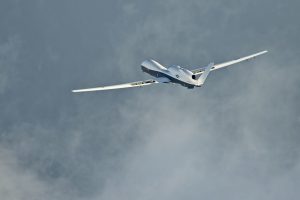
The Triton will provide a superior picture of what is happening above the surface, enabling the Poseidon to focus on what is below the surface.
While the Triton itself may be referenced as an unmanned aerial vehicle (UAV), the program is more accurately referenced as an unmanned aerial system (UAS), a combination of UAV, Flight control and payload operators stationed at a MOB.
The Triton will support a broad mission set including maritime ISR patrol, signals intelligence, search and rescue and communications relay.
The US Navy currently intends to buy 68 aircraft to ensure adequate global coverage capability. And with the Triton as part of the “family of systems” ISR/C2 co-deployed capability with the P-8, the focus is the shaping of a common team and analytical capability to support the deployed warfighter.
Given the UAS altitude, endurance and sensors, Program Manager Burke sums up the capability as “persistent, real time coverage across the designated maritime environment. All assets (MOB, Carriers, P8A Poseidon’s, National Intelligence Center etc.) tied into the feed can see what is in that space, and where it is going in real time.”
Miller explained in his article how the US Navy was looking to the deployment of Triton beginning in 2018.
The US Navy has carefully considered the deployment of the UAS. Throughout the services the use of UAVs has often resulted in air vehicle operators (AVO) or pilots in one location, with payload operators and Intel personnel in another location.
Very focused on the tactical utility of the system with direct feed to Carriers, Expeditionary Strike Groups, P8A, the Watch Centers etc. the US Navy determined to pull all personnel into a single control station, where they would function as if they were on an aircraft themselves.
Within that context Program Manager Burke identified the 3 components of the UAS.
- Aircraft with sensors (UAV)
- Main Operating Base (MOB)
- Forward Operating Base (FOB).
MQ-4C Triton Squadrons are based around 5 circles of global orbit and will be based at NAS Jacksonville and NAS Whidbey Island with the following structure:

Each MOB contains 2 Main Control Stations (MCS) that function independently and simultaneously. The MCS is configured as if the crew were on an aircraft, with Tactical/Mission coordinators, AVOs (3 stations so inbound, outbound and on station UAVs can be operated) and payload operators clustered together.
The pictures in the slideshow are credited to Navair and to Todd Miller.
The Triton on the ground were shot by Todd Miller and the Triton in the air is credited to Navair.
The Australians are engaged from the ground up with the US Navy in the Triton program as is the UK.
And they are learning first hand the evolving US Navy approach.
The Australians are concerned that when they add a new platform like the Triton, that they can position themselves for maximum effective use of the asset for an integrated force in the battlespace.
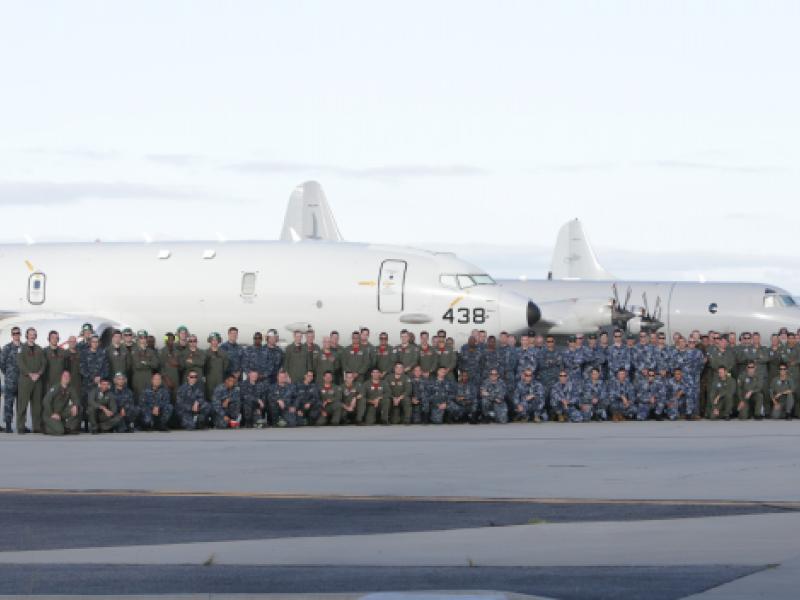
This means that one priority is to shape a workforce which can handle data, and to support the deployed forces.
In the Defence Integrated Investment Program recently published by the Australian Ministry of Defence, they underscore this point as follows:
Workforce reshaping and growth in this capability stream will support: collecting and analysing intelligence, with a particular focus on strengthening intelligence capabilities in support of deployed forces (for example to support increased use of unmanned systems)
- Improving support to counter-terrorism operations
- Enhancing geospatial systems analysis and support, including information and communications technology systems, and strengthened collection and assessment capabilities
- Processing, exploiting and disseminating the large volumes of data that will be generated by sophisticated platforms – such as the P-8A Poseidon maritime surveillance and response aircraft, unmanned intelligence, surveillance, and reconnaissance systems (including Triton), F-35A Lightning II Joint Strike Fighter, E/A-18G Growler, Hobart Class Air Warfare Destroyer, future frigates and future submarines
- Generating intelligence and mission data for pre-programming advanced platforms
- Enhancing cyber capabilities
- Developing further space command, control, communications, computer and intelligence systems and space surveillance sensors, including ground support functions
- Improving electronic warfare planning and coordination, and spectrum management
- Enhancing our ability to develop electronic warfare countermeasures to protect ADF systems
- Enhancing situational awareness across all domains and environments (page 30).
According to a story by the VP-16 PAO published on March 16, 2016:
Two U.S. Navy maritime patrol squadrons were assigned the unique privilege of working with the Royal Australian Air Force (RAAF) in the joint exercise Australian Fleet Concentration Period West 16-2.
The exercise consisted of Australian and U.S. military assets working together in a coordinated anti-submarine warfare scenario with an Australian submarine acting as the opposition beneath the Indian Ocean.
Jacksonville-based Patrol Squadron (VP)-16 and Whidbey Island, Wash. based Patrol Squadron (VP)-46 flew multiple missions out of RAAF Base Pearce, located just north of the Western Australian capital city, Perth.
The exercise focused on bringing allied maritime forces together in order to maintain proficiency and learn varied tactics from each other.
The VP-46 “Grey Knights” fly the venerable Lockheed P-3C Orion, the same basic aircraft the RAAF utilizes to assert maritime dominance around its country’s ocean borders.
Unique to the exercise was the Boeing P-8A Poseidon, flown by the VP-16 “War Eagles,” that was selected as the replacement to the aging RAAF AP-3C Orion in 2014. The RAAF is expecting its first delivery in early 2017.
Australian Air Force and Naval personnel had the opportunity to fly with both U.S. squadrons during the exercise. Flight Lt. Grant Targett, a RAAF AP-3C pilot, commented, “It was fantastic to see the P-8A in action.
The P-8A is operated quite differently than the AP-3C.
The technologically advanced design of the P-8A allows for more efficient operations. I’m looking forward to starting P-8A conversion in Jacksonville.”
Targett is one of the Australian Air Force pilots who are being sent to Patrol Squadron (VP)-30 at NAS Jacksonville, to be trained and qualified by the U.S. Navy to facilitate Australia’s transition from AP-3C to the P-8A.
Pilots and aircrew weren’t the only guests aboard the flights: the Grey Knights and War Eagles flew submariners from the Royal Australian Naval Submarine Service, giving both the U.S aircrews and allied submariners a chance to share information and tactical relevance.
VP-46 Patrol Plane Commander Lt. Nicholas Duckworth commented, “The chance to interact with the Royal Australian Air Force and Navy provided a valuable training opportunity and allowed us to expand the interoperability with our allies in the region.”
The exercise was a huge success, bringing U.S. and Australian military assets together on the maritime battlefield. The Grey Knights of VP-46 and War Eagles of VP-16 thank the RAAF for its gracious hosting and planning of AUS FCP West 16-2.


